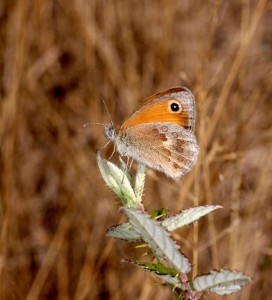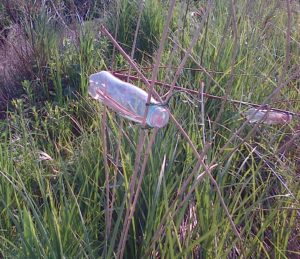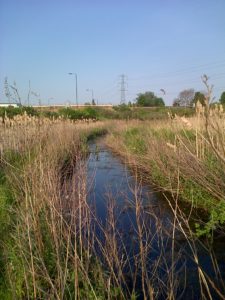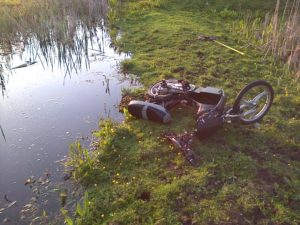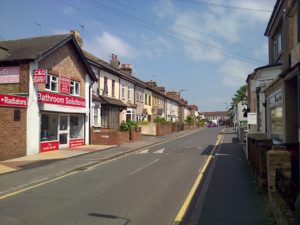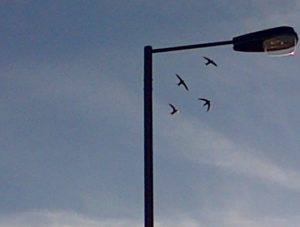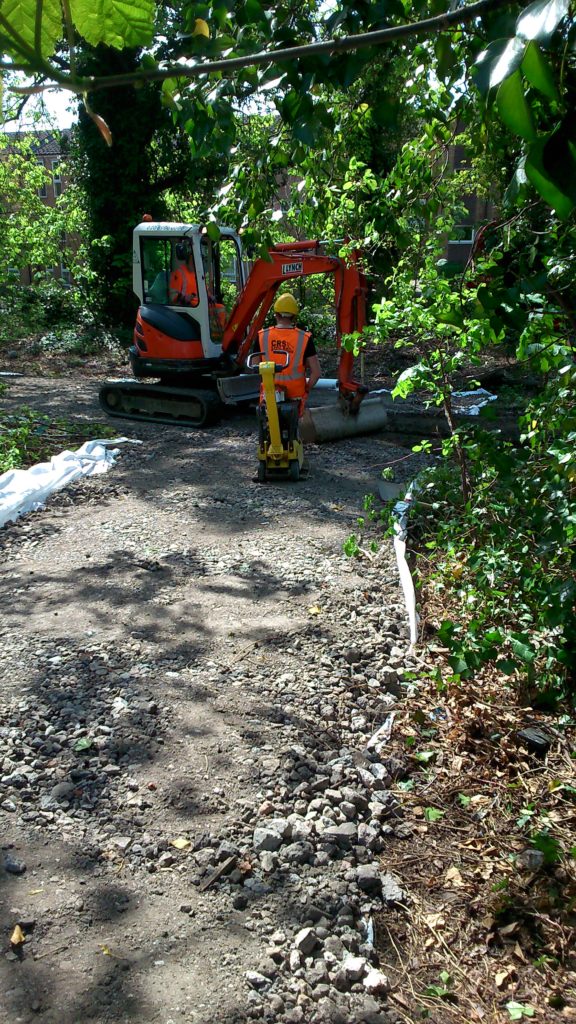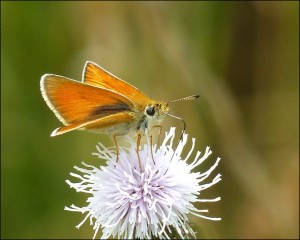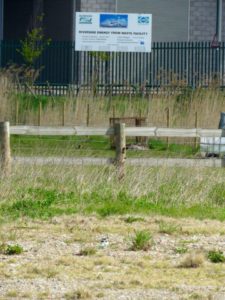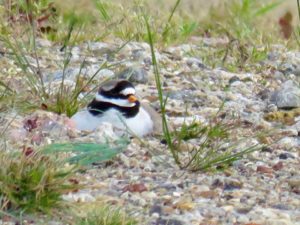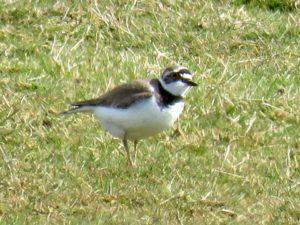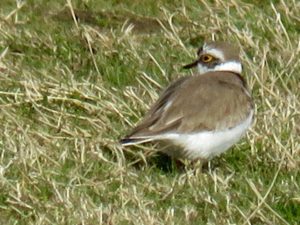There is plenty of scope for and pleasure to be gained from watching and photographing butterflies in the Borough over the forthcoming months, but on the basis of recent records, here are some suggestions for targeted work to increase our knowledge of these insects and their status in Bexley.
The Marbled White (Melanargia galathea). Is this species now on the march in south-east London, and will it get a foothold in Bexley in the next few years? When Mike Robinson found one at Hollyhill Open Space on 24th June 2015 this appeared to be the first ever (modern, at least) sighting in Bexley. It was also seen there the next day by Chris Rose. But this was quickly ‘trumped’ twice. It transpired that Ralph Todd had seen one at Crayford Marshes on 4th June 2015 but had only got a fuzzy photograph and had not kept it. If either of these insects was a fertilised female there’s a chance the species could be seen at these sites again in 2016, as well as wanderers elsewhere. It was also discovered that John Archer had seen one at Erith Marshes, on the Thames path near the original Crossness sewage works, on 7th July 2010. The latest LNHS butterfly count data for London (2014) says the Marbled White figure was the highest since reliable information for the species first became available in 1997. A LNHS Journal report on the butterflies of Blackheath /Greenwich Park states that it was seen there in 2012 and then 2014, and that it was also seen at Greenwich Ecology Park in 2014. In 2014 it was also recorded in Jubilee Country Park, Bromley.
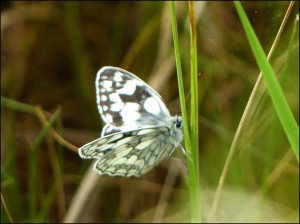
Marbled White at Hollyhill open space in June 2015, a species that appears to be spreading nationally, and with two sightings in Bexley during that year, could potentially get a foothold here too. (Photo: Mike Robinson)
Will there be a wandering Wall (Lasiommata megera)?
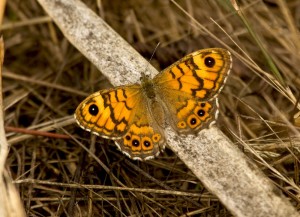
Wall Brown. The species disappeared from Bexley and London some 20 years or more ago, but has recently been seen at Rainham and Swanscombe marshes (Photo courtesy Richard Winston)
This is a Section 41 species of principal importance under the NERC Act in England (widespread but rapidly declining). Populations in London fell rapidly from the 1990s. It used to be fairly frequent in my Barnehurst garden north of the railway station in the 1980s, at which time there was no sign of the Speckled Wood. Now the opposite is true. One was seen at Rainham in 2011, and there is a report that 2 were seen on May 8th 2016 at Swanscombe marshes. The Thames-side fringes of the Borough offer the best, if very slim, prospects of finding one.
The Small Heath (Coenonympha pamphilus). There is concern that although the overall range of this species appears to be stable, numbers of colonies have disappeared. It is very uncommon in London. It is a UK Biodiversity Action Plan priority for further research.
In recent years it has been recorded on the ‘rough’ at Barnehurst Golf Course, where counts would be invaluable, and at Crayford Marshes where Moat Lane joins the Darent path. Uncut parts of Footscray Meadows, East Wickham Open Space and maybe the north-east corner of Crayford Rough look to be possibilities, but GiGL has no record of it at these sites. It may just be that no one has looked (at the right time). Are there other places where it may be found in Bexley?
Joe Johnson established in 2015 that the Silver-washed Fritillary (Argynnis paphia) occurs on the Bexley side of the border with Kent. But has it made it made it over the road into North Cray Woods and up to Churchfield wood or beyond?
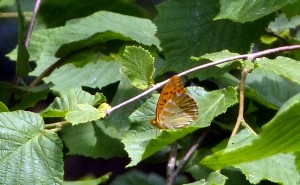
Silver-washed Fritillary at Joyden’s Woods in 2015, showing the silver washing to the undersides of the wings from which the common name is derived. (Photo: Ralph Todd)
The White Admiral (Limenitis camilla). GiGL has a record of this woodland species from Gatton’s plantation in 2003, but the status of that record is ‘unverified’. The species increased dramatically in the 1920s, but has declined significantly in the UK in the last 20 years for unknown reasons. The London Natural History Society received sightings of this species from only three sites within the capital for 2014. On June 24th 2015 Ralph Todd and Ian Stewart spotted a White Admiral on the woodland edge of a ride bordering Chalk Wood, having also seen the species in Joydens Wood somewhere near the margin of Bexley. This strongly suggests that it occurs inside the Bexley border, but much of the boundary with Dartford (Kent) in this area falls within woodland so it can be difficult to be sure which side of of the line one is on. It is hoped that the White Admiral can be unequivocally confirmed as a Bexley butterfly during 2016.
How many more sites does the White-letter Hairstreak (Satyrium w-album) occupy? Until I went looking a few years ago they were only known in Bexley from the North Cray Wood area (Footscray Meadows) and the Council had a Biodiversity Action Plan for them, which it dropped as it didn’t do anything about it … I then found the species at three other sites, by targeting areas with good amounts of Elm: Moat Lane by Slade Green, Barnehurst Golf Course (west end – have yet to be sure they’re on the elm patch at the east end too) and on trees between the railway and hospital access road on south side of Bursted Woods.
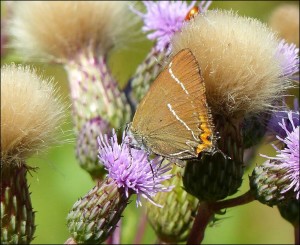
White-letter Hairstreak, showing why the scientific name includes w-album (white w). Pictured at Footscray Meadows in 2015 by Mike Robinson.
Other Elm patches I’ve looked at, not very thoroughly, and seen none are:
North margin of Franks Park in Robin Hood Lane area / north east edge of Martens Grove woodland / Burnt Oak Lane, Sidcup, golf course edge – massive amount of Elm here all along the roadside / along south margin of ‘woodland’ by Lamorbey lake, next to the school /Watling St – London Rd at junction with Martens Av /ridge on west side of old Larner Rd estate (may no longer be accessible due to rebuilding work) / south side of Rochester Drive footbridge over the A2, leading to BETHS school bridge over the river Shuttle.
Other areas of Elm I’ve noted but not found time to watch at relevant times are:
By the closed road bridge over the railway at the foot of Avenue Rd, Erith / Iron Mill Lane, Crayford, by St. Paulinus school / scattered patches of Elm along footpath 106 by the River Cray between Crayford and Barnes Cray Rd / bottom of Colyers Lane (Slade Green end) / Whitehall Rd on the west side of Slade Green station, by the ‘rough’ here (not far from Moat Lane so looks a good bet).
Brown Hairstreak (Thecla betulae). Tristan Boulton of LACV thinks he may have seen one in the playpark by Lesnes Woods in 2014, a year in which there were a handful of records from the southern fringes of London. It may have benefitted from the planting of Blackthorn, the larval foodplant, in new hedges.
What’s the true distribution of the Brown Argus (Aricia agestis)? The species is rather easily confused with the female Common Blue, so it may occur at more sites than we currently think.
As always, it’s worth keeping an eye open for wandering or vagrant species that wouldn’t normally occur in Bexley.
With regard to monitoring population trends, it is hoped that formal transect counts will be set up at Crossness and Braeburn Park shortly, and volunteers will be needed to help with these.
To get involved and to stay in touch with the latest butterfly news in Bexley follow:
https://www.facebook.com/BexleyButterflyandMothGroup/
Chris Rose

